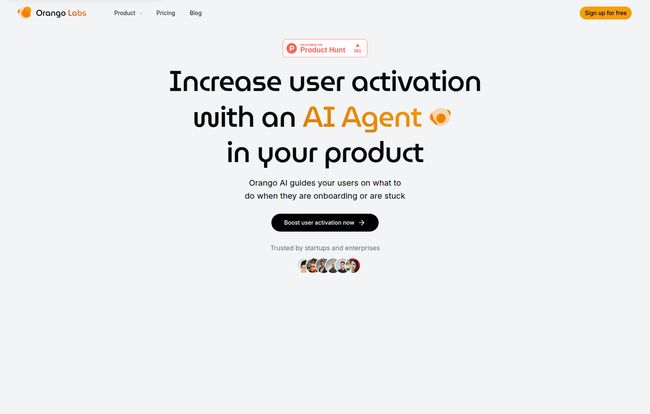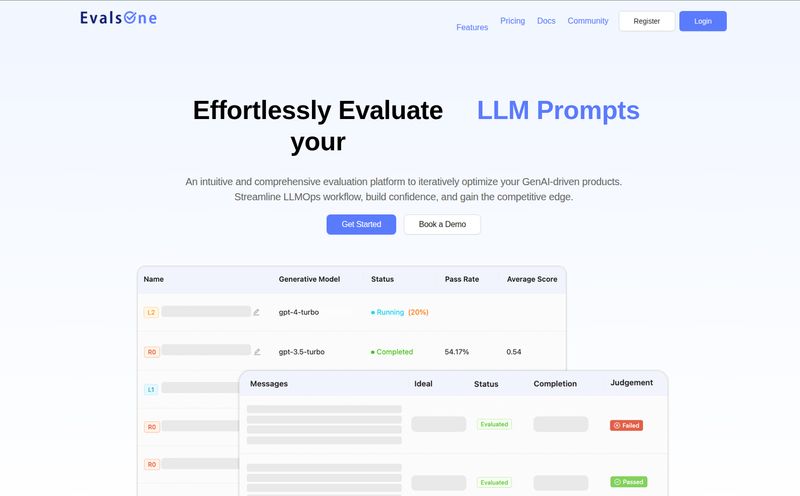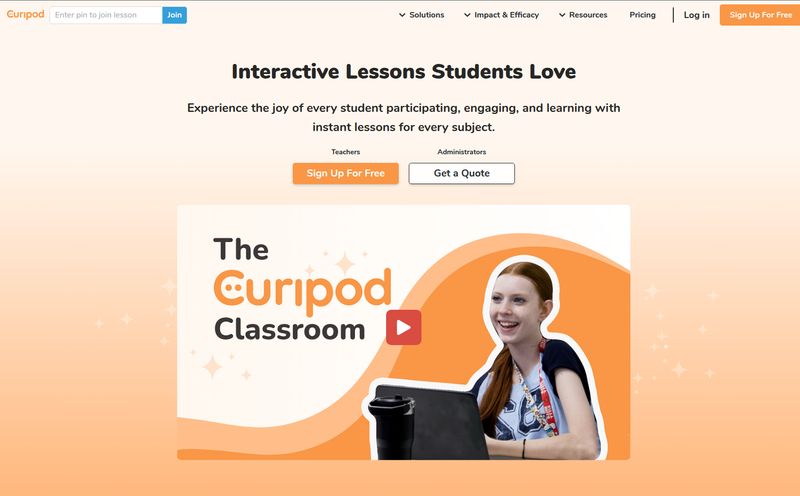We’ve all been there. You sign up for a shiny new SaaS tool, hyped by the landing page promises. You log in, full of optimism, and are immediately greeted by a dashboard that looks more complicated than a space shuttle's cockpit. Ten minutes later, you've clicked around aimlessly, achieved nothing, and logged out, never to return.
That, my friends, is the leaky bucket of user churn. It’s the silent killer of so many great products. As someone who’s spent years watching traffic and conversion metrics, I can tell you that getting a user to sign up is only a tiny part of the battle. The real war is won in those first few critical sessions. It’s the difference between a lifelong advocate and another bounced user.
So, when I stumbled upon a tool called Orango AI, my curiosity was piqued. Their claim? To increase user activation with an in-product AI agent that doesn’t just show users what to do, but actually... does it for them? It sounds a bit like magic. And maybe a little scary. Let's dig in.
What Exactly is Orango AI? (And Why Should You Care?)
Forget everything you know about those annoying, pre-scripted product tours that pop up and force you through a 10-step process you don't care about. You know the ones. You click “skip” faster than a speeding bullet.
Orango AI is different. The company describes it as an “expert beside your user’s mouse,” and honestly, that’s a pretty good analogy. This isn't just a series of tooltips. It's an AI assistant that can take control of a virtual cursor and physically guide a user through your app's interface. It clicks the buttons, fills out the forms, and navigates the menus on their behalf. The philosophy is simple but powerful: show, don't tell.

Visit Orango AI
Instead of a user getting stuck and having to search through a help doc or—god forbid—file a support ticket, Orango AI can pop up contextually and say, “Hey, looks like you’re trying to set up a new project. Want me to handle that for you?” It's proactive guidance, designed to get users to that 'aha!' moment as painlessly as possible.
A Look Under the Hood at the Key Features
So, what's making the wheels turn? While the website hints at a broader suite of tools, including autonomous UX testing and AI data extraction (some marked as 'Coming Soon'), the main event right now is the AI Agent itself.
The In-Product AI Agent
This is the star of the show. It’s the little ghost in the machine that drives the cursor. The agent understands your product's UI and can perform multi-step tasks. Think about a user trying to set up a complex integration. Instead of a 2,000-word support article with outdated screenshots, the Orango agent can just... do it for them, explaining each step as it goes. This not only accomplishes the task but also teaches the user how to do it themselves next time. A game changer, if it works as smoothly as advertised.
Completely Controllable and Context-Aware
My inner control-freak developer immediately asked, “Wait, I’m just going to let an AI run wild in my app?” Thankfully, the answer is no. Orango stresses that the agent's behavior is 100% controllable. You define the workflows and set the boundaries. The AI is trained specifically on your product, so it’s not just guessing. It learns your features and the most efficient paths to get things done, and its knowledge base is updated with every new release you push. That's a nice touch, preventing the tool from becoming obsolete the moment you change your UI.
Let's Talk Money: The Orango AI Pricing Structure
Alright, the part everyone scrolls down for. Pricing. Orango AI uses a MAU-based model, which stands for Monthly Active Users. This is pretty standard for product-led growth (PLG) tools and it makes sense—the value you get scales with the number of users you're serving.
Here’s a quick breakdown of their plans:
| Plan Name | Price | Key Features | Best For |
|---|---|---|---|
| Bootstrap | Free | 50 MAUs, 1 AI Agent workflow, 1 AI Tour, Analytics | Hobby projects or just trying it out. (Note: The site says this is available only until 31st March, so check if it's still active!) |
| Startup | $270 / month | 500 MAUs, 10 AI Agent workflows, 3 AI tours, up to 3 seats | Small businesses and startups getting serious about growth. |
| Organizations | $1,070 / month | 5,000 MAUs, 100 AI Agent workflows, 30 AI tours, up to 10 seats | Mid-sized businesses with a significant user base. |
| Enterprise | Custom | Unlimited everything, dedicated support | Large-scale enterprises needing a bespoke solution. |
My take? The MAU model is great when you're starting. It keeps costs low. But you have to do the math. As you grow, that Startup plan could quickly feel tight, and the jump to the Organizations plan is substantial. It's a classic scaling consideration you need to model out. For a product manager at a mid-sized company, the cost could easily be justified if it demonstrably reduces churn by even a few percentage points or cuts down on support-staff hours.
The Good, The Bad, and The... Coming Soon
No tool is perfect, especially a new one on the block. After looking through everything, here's my honest assessment.
The upsides are obvious and exciting. Reducing your support load is huge. Increasing user activation is the holy grail for product managers. And the idea of giving every user a personal, real-time guide could be the competitive edge that keeps people from churning to your competitor. It helps plug that leaky bucket we talked about earlier.
On the flip side, you're buying into a vision. Some features are still on the roadmap, which is a bit of a gamble. And that MAU-based pricing, while fair, requires you to keep a close eye on your user growth vs. your budget. It’s not a set-it-and-forget-it expense. It’s an investment that needs to prove its ROI, month after month. For some, that might be a dealbreaker. For others, it's just the cost of doing business in the modern SaaS world.
Is Orango AI Just Another Annoying Pop-up?
I think this is a fair question. We all have a bit of PTSD from Clippy, the infamous Microsoft Office assistant. The key difference here is context. A traditional product tour is dumb; it starts on page load and doesn't care if you're a first-time user or a power user. Orango AI claims its strength is detecting when a user is actually stuck or hesitant. If it can deliver on that promise—intervening at the moment of friction, not at a pre-set time—then it moves from 'annoying pop-up' to 'helpful assistant'. That’s a critical distinction.
Final Thoughts: Is Orango AI the Future?
I've seen a lot of tools come and go. Orango AI feels different. It's not just another analytics platform or feedback widget. It’s an attempt to fundamentally solve the user onboarding and retention problem with a hands-on, AI-driven approach.
Is it the right fit for everyone? Probably not. If you have a super simple, one-function app, it might be overkill. But for any SaaS business with a complex interface, multiple features, and a constant battle against user churn, this is one of the most interesting solutions I’ve seen in a while. It’s a bet on proactive guidance over reactive support.
It’s definitely a tool I’ll be keeping my eye on. In a world where user experience is everything, giving each user a personal guide might just be the next big thing.
Frequently Asked Questions
- 1. Is Orango AI difficult to set up?
- The website claims it can be integrated with a single line of code. The initial setup seems straightforward, but the real work will likely be in mapping your essential user workflows for the AI to learn. This will require some strategic thinking from your product team.
- 2. Who is the ideal customer for Orango AI?
- SaaS companies, especially those with complex products, who are struggling with low user activation rates, high churn, or a heavy support ticket load related to user onboarding. If your analytics show users dropping off at specific, complex points in your app, this could be a great fit.
- 3. How is this different from a standard chatbot or product tour?
- A chatbot answers questions. A product tour shows you static steps. Orango AI is an interactive agent. It takes control of the cursor to perform actions within your app on the user's behalf, providing a real-time, hands-on walkthrough.
- 4. Is the MAU-based pricing worth it?
- It depends on your ROI. You need to calculate the cost of churn and support for your business. If a $270/month plan prevents even a handful of high-value customers from leaving or frees up your support team, it could pay for itself very quickly.
- 5. What happens if the AI agent does something wrong?
- This is a key concern. Orango states that the AI agent's behavior is 100% controllable by you. You define the specific workflows and actions it can take, which should prevent it from going 'off-script' and performing unintended actions in your product.



